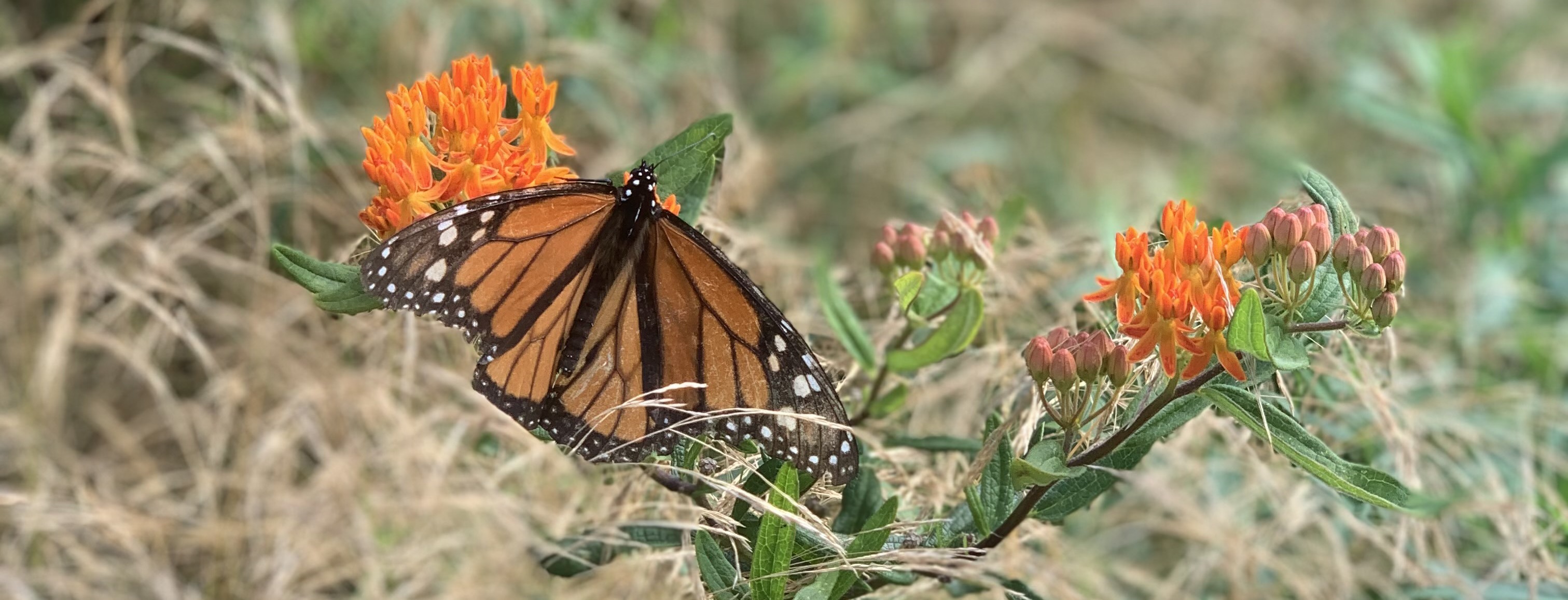
Native plants provide a wide range of environmental benefits to support wildlife, biodiversity, clean water and the health of our local ecosystems and communities. And they’re beautiful too!
The Surfrider Foundation has recently changed the Ocean Friendly Gardens criteria to require a minimum of 50% native plants. The Ocean Friendly Gardens program started over ten years ago to provide people with solutions to polluted urban runoff that they could implement at home in their own yards. Since then we have been encouraging people to grow native and climate-appropriate plants that can soak up rain and thrive without any additional irrigation. As the impacts of climate change become more pressing and immediate, it’s important that people realize Ocean Friendly Gardens can also provide solutions to help support resilient communities and coasts. Native plants are a big part of these solutions. Keep reading to learn more.
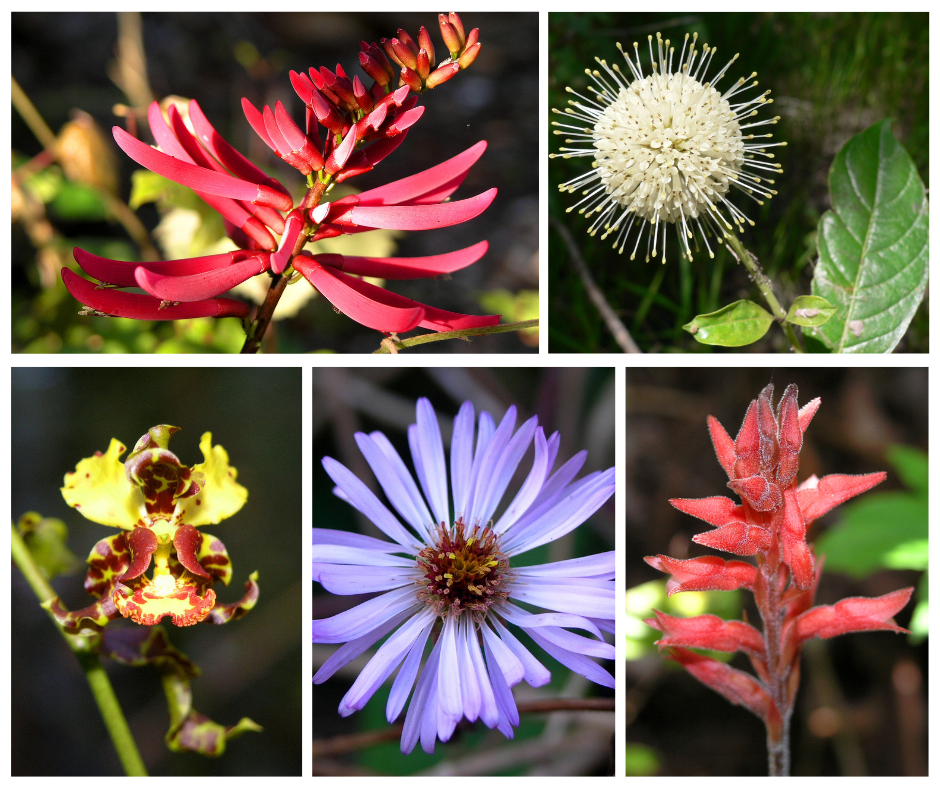
Plants native to Florida via Everglades National Park on Flickr
Building healthy soils to soak up the rain and prevent runoff
Native plants protect our beaches and waterways by slowing down and soaking up rain before it can become polluted runoff. A typical city block generates five times more runoff than a woodland area of the same size (EPA). The robust root systems of native plants store water underground and support extensive habitat for beneficial macro and microorganisms in our soil. By loosening soil and retaining moisture, healthy roots can transform hard, dry soil into a living sponge. The short roots of turfgrass lawns do not provide these same benefits and contribute to fertilizer and pesticide pollution. Healthy, water absorbing soil and root networks prevent urban runoff from polluting our beaches and waterways when it rains. Native plants that are adapted for seasonal flooding are also great additions to rain gardens and swales designed to help sink rainwater and prevent runoff.
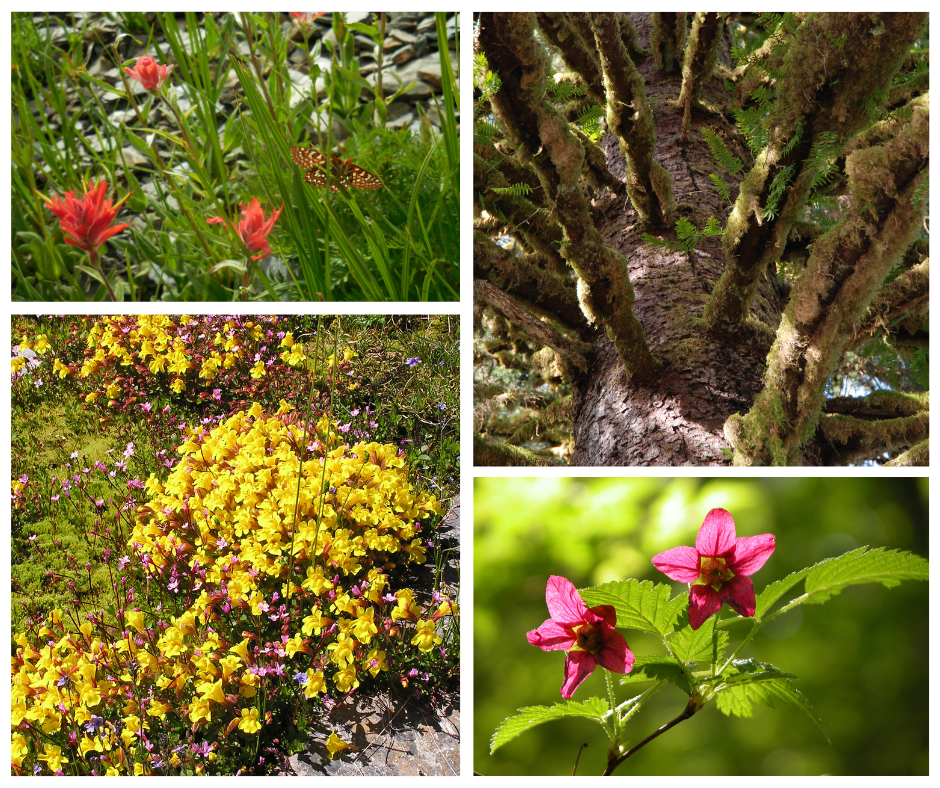
Plants native to Washington via Olympic National Park on Flickr
Creating native habitat & supporting pollinators
Many native plants are interconnected with the lives of local pollinators, and act as important food and habitat sources for butterflies, moths, bees, hummingbirds, bats, and beetles. While many adult butterflies and moths feed on a wide variety of plants, many caterpillars can only feed on a few native plants, and rely on these host plants to complete their life cycles. Pollinators play an important role in maintaining biodiversity, supporting crops and building healthy local plant communities that we can all enjoy.
Native plants also add dimension and life to a garden, inviting wildlife and connecting areas isolated by development and urbanization. Many gardeners who use native plants are excited to see their yards transform into a haven for butterflies, birds, and other local wildlife. We can create networks of nature within our communities by planting native plants in our yards, parkways, schools, and anywhere there is soil to plant in!
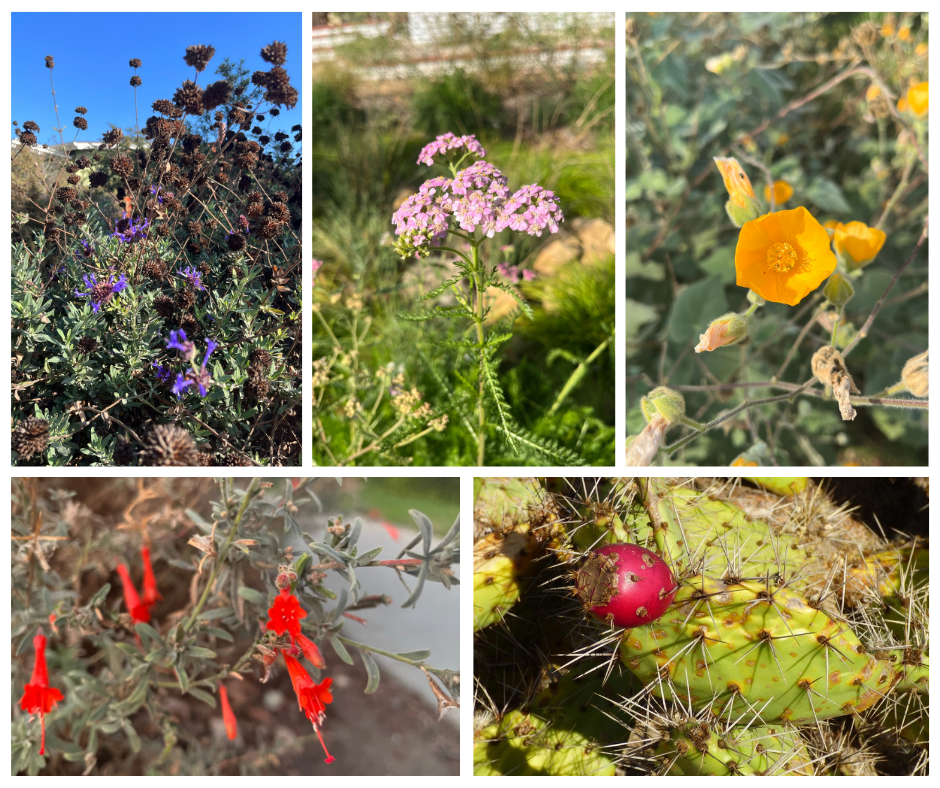
Plants native to California
Conserving water
Native plants are adapted to their local climates, conserving water in dry regions and preventing dry weather runoff caused by wasteful irrigation. Native plants can thrive in areas that are challenging for imported plants, and don’t require the chemical fertilizers and pesticides that are often applied to their non-native counterparts.
Reducing the impacts of climate change
Healthy native plants and biologically active soils are an important carbon storage tool to work against climate change. Plants use carbon in the atmosphere to grow, and soils trap this carbon in the ground when plant material falls and decomposes. Native plants are also less climate intensive to maintain. The frequent mowing of turfgrass and hedging of non-native ornamental species with gas-powered tools releases large amounts of greenhouse gasses and toxic pollutants into the air. Native plants require much less maintenance, which is better for the environment and less hassle for gardeners.
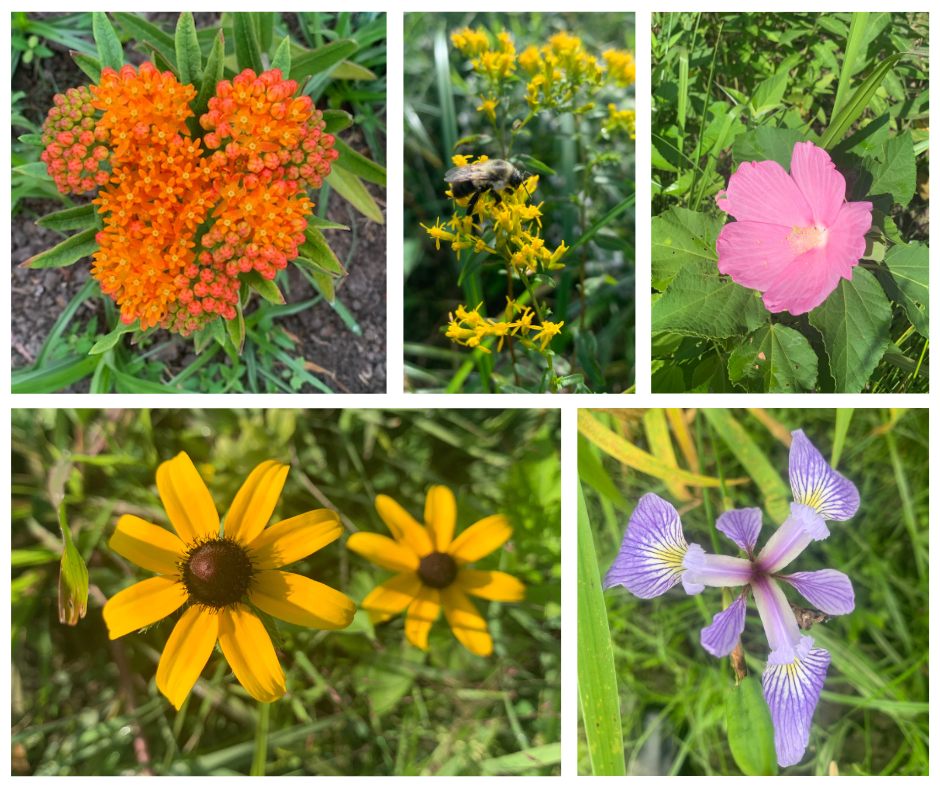
Plants native to New York
Bringing beauty to your garden
Plants native to your region come in a variety of colorful blooms, unique foliage, and pleasant fragrance.You do not have to sacrifice looks to help your local environment! Whether you prefer vibrant, showy flowers that attract butterflies, lush, meadow-like tapestry lawns, or berry bushes that bring in birds, there are options to suit any style. Wherever you live, native plants can turn a drab lawn into a rich, dynamic garden full of beauty and life.
With all of their great benefits, why only a minimum of 50% native plants? Why not require 100% for Ocean Friendly Gardens? We hope to strike a balance between promoting native plants and acknowledging the benefits of plants which are climate appropriate, edible, and support animals and people. For example, established shade trees in urban areas may be non-native, but can still provide benefits of stormwater capture, habitat for birds and other wildlife, and counteract urban heat island effects. Growing food plants in your garden may require some irrigation or utilize non-native plants, but harvesting fruits and vegetables from your own yard reduces the use of plastic food packaging, fertilizers, pesticides, and carbon emissions related to transport. Keeping plastic and chemicals out of our waterways is important for an Ocean Friendly Garden too!
Join us in spreading awareness about the benefits of native plants, and get involved with an Ocean Friendly Garden program near you. You can learn more about native plants and find native plants in your region on Beachapedia. Find out more about Surfrider’s Ocean Friendly Garden program here, or see if your local chapter has an OFG program you can support!
